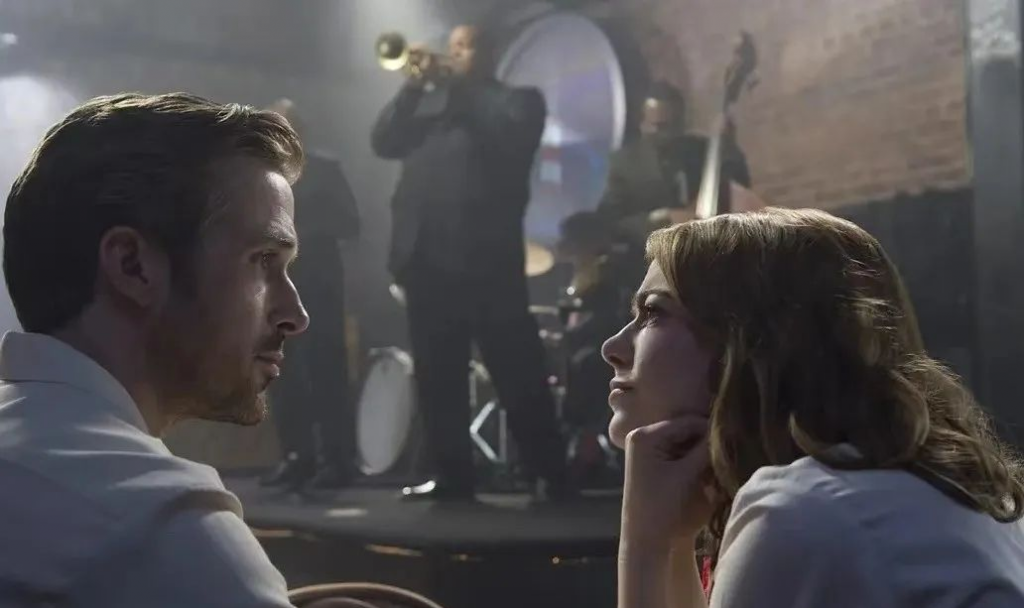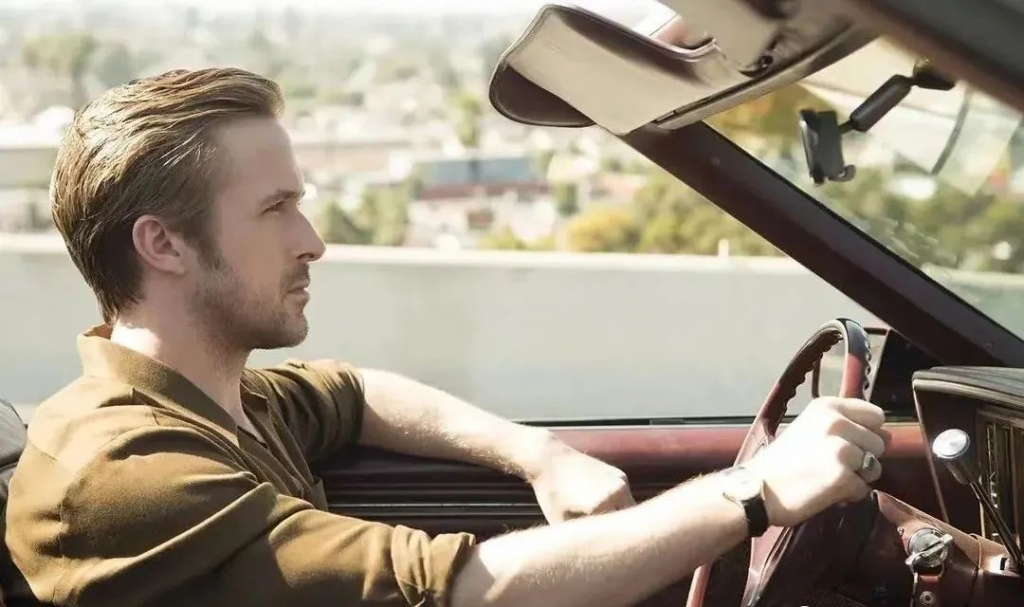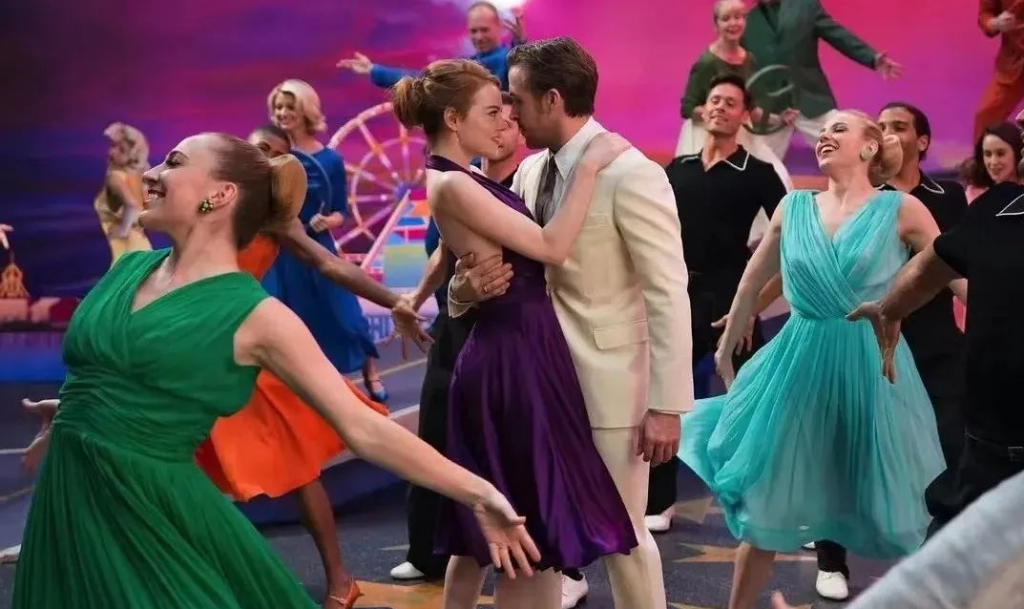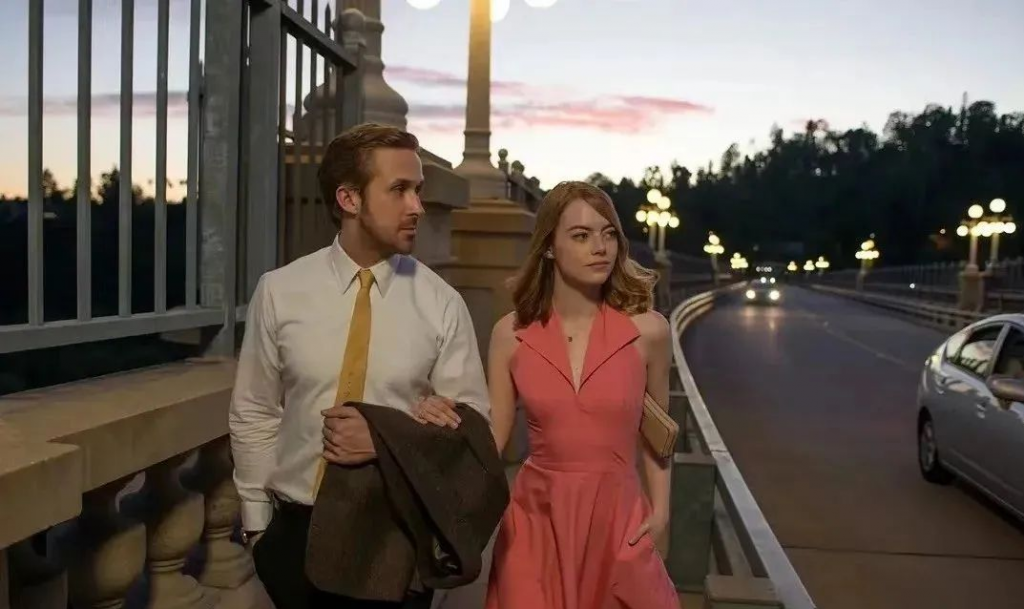La La Land: A Round Dance of Dreams and Reality

After its release, “La La Land” won good reputation and box office, and won the Oscar for Best Director, Best Actress and many other awards, showing the eternal theme of Hollywood movies: the conflict between dreams and reality, love and life. As a theatrical song and dance film, “La La Land” still follows the traditional Hollywood musical genre pattern set, although the plot is not said to be astonishing, but the brilliant camera scheduling, reasonable use of color, sophisticated use of music and unique narrative style composition, not only expresses the nostalgia and tribute to the old song and dance film, more for the audience to tell an extraordinary truth –fighting for your dreams. This round dance song of dreams and reality is encouraging people in the rough and tumble of reality to dance with gusto, allowing the audience to once again pay tribute to dreams and those who struggle for them.

01. Narrative with alternating seasons
The director linked the film’s narrative time with the alternation of seasons, using the characteristics of the seasons to allude to the emotional development of the two. The film is divided into five sections: winter, spring, summer, autumn and winter. The hero and heroine meet in winter, fall in love in spring, fall in love in summer, fall in sadness and finally reunite in winter. “Spring, summer, autumn, winter” is retroactively translated back into English as “winter”, which is also a noun meaning “depression, decline”. “In the corresponding chapter of the film, Mia’s audition is repeatedly frustrated, and Sebastian is mercilessly fired for playing his own music in the restaurant where he works. “The English word “spring” means “to originate”, and combined with the beautiful scenery of spring, it also indicates that a hazy love will grow between Mia and Sebastian. This is also a sign of the secret love between Mia and Sebastian, which will eventually blossom into a dazzling flower, just like the magical scene of spring. The word “summer” also means “golden age”. Summer is hot in people’s hearts, when people are passionate and agitated. “But as the Oscar’s eternal theme of love, it seems that the regretful love is more able to arouse people’s eagerness and good wishes for love. In the film, the hero and heroine did not make it to the end, although they both realized their dreams in their own way, but in front of love, the most desperately pursued and sentimental feelings in the world, career seems so humble and small, so the director used “Winter” as the title of the last chapter. So the director used “Winter” as the name of the last chapter, suggesting that the two of them reunited after a long time, and their sad and despondent state of mind is as depressed as winter.

02. brilliant camera scheduling
As an important branch of the audiovisual elements of a film, the use of scenery and superb camera movement is almost impossible to bypass in the creation of a film. In “La La Land”, the director’s use of long shots adds many highlights to the film. The long shot, the method of shooting in one take, is very good at showing the integrity of the object or character movement. Song and dance films are characterized by the form of song and dance, which is originally a form of performance on the stage, but the director changed his mind and used the camera to expand the stage, thus realizing the reconstruction of the stage. One of the most ingenious camera designs in “La La Land” is the use of long shots. The use of long shots can ensure that time and space in the film remain consistent, documentary and complete, and can more truly reflect the reality of life. The interpretation of long shots can produce a comfortable rhythm, which leads the audience to explore what kind of story the film will tell next. This rhythm is not fixed; in the opening credits of “La La Land,” the long shots of the road crew create a warm atmosphere, and this upbeat and relaxed rhythm has a powerful tension and impact. The opening credits start from the sky with the off-camera soundtrack and move down to the cars on the highway. The camera continues to pan down the highway to the right until one of the cars, where it pushes to a close up of an actress who starts to sing and push open the door of the car to perform on the highway. The actress walks forward and the camera starts to move with the direction of the actress’ movement. In the middle of the process, several male actors get out of the car one after another to match the actress’ singing and dancing, which enhances the watchability of the camera. The actress continues to walk forward and the camera continues to show actors who get out of the car and dance with the actress. Next, the camera quickly flips to the front of the camera direction, several actors singing and dancing together, the camera follows the direction of movement of one of the actors to the right to the right side of a car, another actress in the male actors to open the door to get out of the car to participate. The camera continues to follow the direction of movement of the actor in green, following a male actor in a white shirt, who dances to bring out another female actor singing.

The camera moves from the front side of the pair of actors to an overhead shot, where an interesting duet and a lively group dance create a strong visual impact. The camera continues to follow the white-shirted male actor, thus leading to the band group inside the van, where all the actors show their skills and participate; a dump shot focuses again on the female actor who is lying on a red car, and she sings softly. This contrast between the number of people and the small number of people makes it easier for the audience to focus on the words she sings: When they let you down, the sun rises as usual, and it’s another bright sunny day. Next, the main camera line continues to follow around a male actor in blue who is skateboarding. The male actor in purple skips across the frame, and the female actor in yellow becomes the main camera line again as she jumps up and turns her back to the camera. With her arms raised in motion, the camera continues to move upward. In this overhead shot, all the actors stand together in the car and jump, the bright colors of their clothes contrasting with the relatively gray vehicles, as if to say that compared to the obscure and mediocre work, people should have an always lively and colorful heart to face work and life. After the dance, the actors returned to their respective positions, and the camera panned down to the hero and the heroine in front of his vehicle. The hero kept changing the music in the car, and the heroine made a phone call, and the interaction between them through the rear-view mirror paved the way for the rest of the story. The design of the long shot is unique, in order to achieve the final shooting effect, this shot was also repeatedly shot. Of course, some of the long shots were also designed using the “pseudo-long shot” method of hidden editing. For example, in the actual shooting, the five-minute long shot of the highway dance at the beginning of the film is designed to be divided into three shots and repeatedly shot dozens of them, and finally stitched together. Sounds like such a long shot does not bring the audience a sense of fatigue, but rather with this kind of open-hearted way to bring the audience a strong shock.

03. Music and dance participate in the narrative
As a song and dance film, music and dance can be called the soul of “La La Land”. Unlike previous song and dance films, the music in the film is built on the basis of narrative, and the storytelling and emotional expression complement each other, not only to highlight the character, show the inner world of the characters, rendering the film’s atmosphere, easier to draw the audience closer to the film’s content, but also in the blend of music and dance to complete a tribute to the classic film. The music in the film is mainly jazz, but different from the common sense of jazz, not so serious and low, but created a more light and simple tunes and lyrics, of which “City Of Stars” is the most popular, in the film through the main plot. On the observation bridge surrounded by purple sunset by the sea, with Sebastian’s leisurely footsteps, the piano plays short phrases with jazz slow-rock characteristics, and accompanied by whistling constantly repeating, modal and variation, echoing Sebastian’s lazy, casual singing, fully reflecting Sebastian’s career disappointment, promoting jazz and frustration, to and feel strange and lonely in the hustle and bustle of the city. loneliness in the hustle and bustle of the city. As Sebastian plays the piano alone in his room, the familiar tune resounds again, with a lyrical and charming jazz intro that is polyphonic and accompanied by Mia with a strong sense of emotional carryover. The duet between the two confesses their love for each other in a romantic, harmonious way. The music proceeds with the jazz piano’s strong rhythmic harmonies, gradually leading to new contrasting elements that bring the piece to its climax. The whole piece adopts a non-repetitive two-part structure, with repeated key changes and scenes of two people constantly striving for and supporting each other’s ideals, and the film extends the development of the plot through the music. The final coda of the piece returns to the beginning scene, with the music written in the motif of the theme, ending in a warm atmosphere.

For example, Mia received an invitation from her sisters to go to a party and sang the song “Some One In The Crowd” with them during the process of dressing herself. When Mia returns home from her unsuccessful audition, she is disillusioned and exhausted and does not want to attend the party, and even doubts her dreams.
Dance is also an important element in the film, in the film there are mainly jazz, tap, waltz and street dance, etc., to show the plot and pave the following have played an important role. The film opens with a street dance in a traffic jam, upbeat and full of passion, which first defines the style of the whole work and makes the audience realize that this is a distinctive song and dance film, and also paves the way for the male and female leads to appear one after another. The tap dance between Mia and Sebastian on the mountain road, while showing their gambling type of you and me, also completes the tribute to the classic film “Singing in the Rain”.
